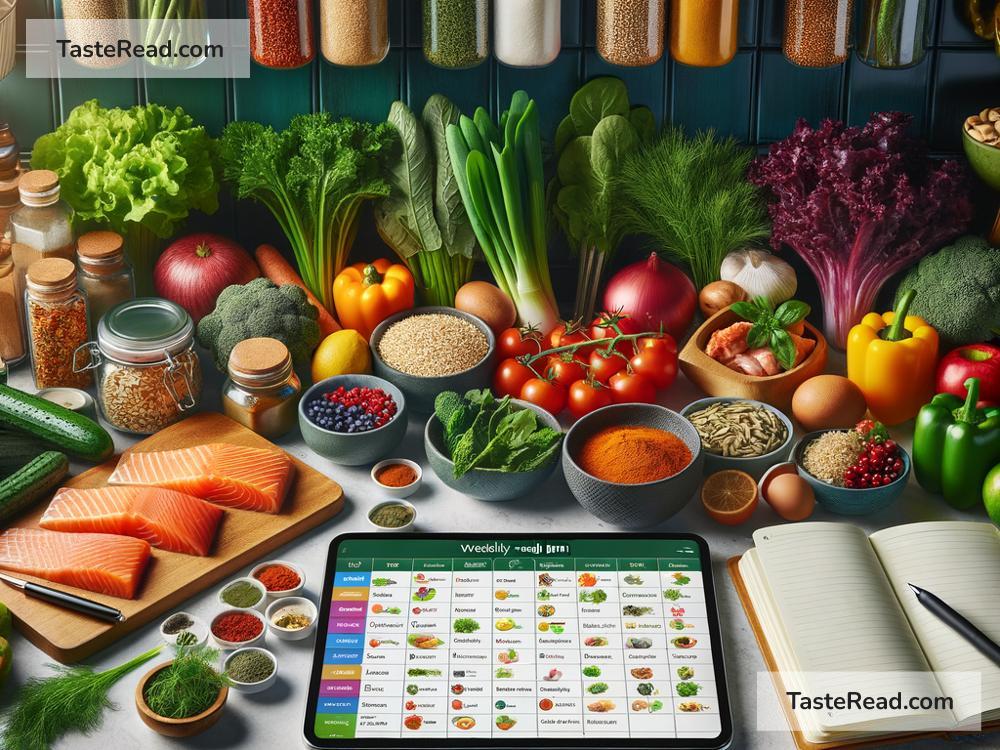How to Plan Meals for Optimal Metabolic Rate
Maintaining a healthy metabolic rate is essential for our overall well-being. It’s the process through which your body converts food into energy, and it plays a key role in weight management, energy levels, and even your mood. The good news is that you can boost your metabolism simply by planning nutritious and balanced meals. In this article, we’ll break down simple steps and tips for planning meals that help optimize your metabolic rate.
What is Metabolism?
Before we dive into meal planning, let’s quickly explain what metabolism is. Your metabolism is basically the engine that keeps your body running. Even when you’re resting, your body burns calories to maintain essential functions like breathing, circulation, and digestion.
If your metabolism is fast, your body burns calories more efficiently, making it easier to manage your weight. If it’s slow, you might find it harder to lose weight and easier to gain it. Luckily, your metabolic rate isn’t fixed—it can be influenced by factors like your diet, physical activity, and lifestyle choices.
The Connection Between Food and Metabolism
The food you eat acts as fuel for your metabolic engine. Some foods can help speed up this engine, while others might slow it down. Choosing the right kinds of food and organizing when and how you eat can make a big difference in optimizing your metabolism.
Steps to Plan Meals for Optimal Metabolic Rate
Here’s how you can structure your meals to keep your metabolism in top shape:
1. Start Your Day with Breakfast
Skipping breakfast can lower your metabolism. When you eat first thing in the morning, you jumpstart your body’s calorie-burning processes. Opt for a balanced breakfast that includes protein, healthy fats, and fiber. These nutrients take longer to digest and help keep you full while boosting your metabolic rate.
Examples:
– Scrambled eggs with avocado on whole-grain toast
– Greek yogurt with nuts and fresh berries
– Oatmeal topped with seeds and fruit
2. Focus on Protein
Protein is your metabolism’s best friend. Your body burns more calories digesting protein than it does when digesting carbs or fat. Including protein in every meal can help you feel fuller for longer and increase your calorie-burning potential.
Examples:
– Add lean meats like chicken breast or fish to your lunch or dinner.
– Include plant-based proteins like lentils, beans, or tofu.
– Snack on nuts or a boiled egg instead of chips or sweets.
3. Eat Small, Frequent Meals
Instead of eating three large meals, try breaking your food intake into smaller meals or snacks every 3–4 hours. This keeps your metabolism active throughout the day and prevents your blood sugar from dropping. However, be mindful of portion sizes—it’s easy to overeat if you’re snacking often.
Snack Examples:
– A handful of almonds
– Sliced veggies with hummus
– A piece of fruit
4. Include Fiber-Rich Foods
Fiber helps slow down digestion, which can stabilize your blood sugar levels and keep your metabolism functioning smoothly. Fiber-packed foods like whole grains, beans, fruits, and vegetables also promote gut health, which plays an important role in metabolic rate.
Examples:
– Brown rice or quinoa instead of white rice
– Apples, berries, or pears for snacks
– Add leafy greens like spinach or kale to your meals
5. Drink Plenty of Water
Dehydration can slow your metabolism, so it’s important to stay hydrated. Drinking water also helps your body process calories more efficiently. Adding a glass of water before meals can even help with portion control.
Tip: Try swapping sugary drinks for plain water, herbal teas, or sparkling water to avoid empty calories.
6. Be Strategic About Carbs
Not all carbs are bad. Whole-grain carbs like oats, quinoa, and sweet potatoes provide long-lasting energy without spiking your blood sugar. Avoid refined carbs like white bread, pastries, and sugary snacks, as they can lead to energy crashes and slow your metabolic rate.
Examples:
– Sweet potato fries instead of traditional fries
– Whole-grain pasta or bread over the refined versions
– Pair carbohydrates with protein to balance your meal
7. Add Healthy Fats
Healthy fats boost metabolism and provide satiety, meaning you won’t feel hungry right after eating. Foods rich in omega-3 fatty acids, like salmon or walnuts, are also great for overall health.
Examples:
– Salmon or mackerel for lunch or dinner
– A tablespoon of nut butter with your favorite fruit
– Avocado slices added to sandwiches or salads
8. Spice It Up
Spices like chili powder, cayenne pepper, and turmeric have been shown to temporarily increase your metabolic rate. Small additions to your meals can help give your metabolism a little kick.
Examples:
– Sprinkle cayenne pepper on roasted veggies
– Add chili flakes to soups or sauces
– Use turmeric in curries or rice dishes
9. Time Your Meals Wisely
When you eat is just as important as what you eat. Eating dinner earlier and avoiding late-night snacks can help prevent metabolic slowdowns. Aim to stop eating 2–3 hours before bedtime.
10. Don’t Forget to Pair Meals with Activity
Food and exercise go hand in hand when it comes to metabolism. While meal planning can optimize your metabolic rate, regular physical activity—especially strength training—can help build muscle mass and boost how efficiently your body burns calories.
Final Thoughts
Boosting your metabolism doesn’t have to involve fad diets or expensive supplements. With thoughtful meal planning, you can nourish your body in ways that keep your metabolic engine running smoothly. Start by including protein, fiber, healthy fats, and water in your daily routine, and remember to spread your meals and snacks throughout the day. By making these small changes, you’ll feel more energized, enjoy better digestion, and support overall health.
Happy eating—and happy metabolism!


